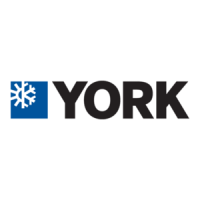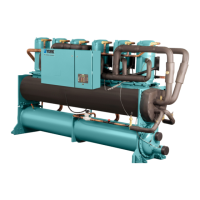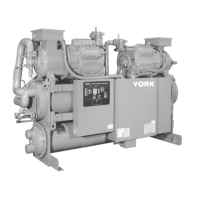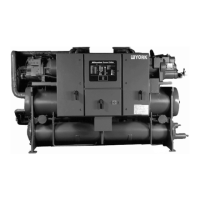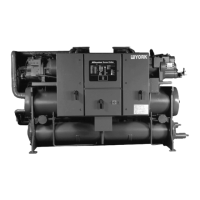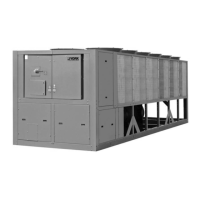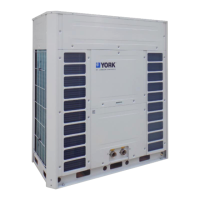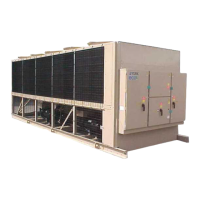SECTION 7 - UNIT CONTROLS Page: 115 INTRODUCTION Overview of the microprocessor control center and its components.
DISPLAY Details of the 40-character Liquid Crystal Display.
KEYPAD Functionality of the 12-button non-tactile keypad.
TRANSFORMER Role of the transformer in supplying power to the control center.
STATUS KEY Explanation of status messages displayed on the control panel.
UNIT STATUS Displays current chiller operating status messages.
UNIT SAFETIES Faults that cause all running compressors to shut down.
OPER DATA KEY Accessing and scrolling through unit operating parameters.
ENTRY KEYS Using keys for viewing and changing programmed values.
SETPOINTS KEYS Navigating and programming cooling setpoints and ranges.
UNIT KEYS Navigating and selecting programmable options.
CLOCK Setting and displaying current day, time, and date for scheduling.
SECTION 7 - UNIT CONTROLS Page: 115 INTRODUCTION Overview of the microprocessor control center and its components.
DISPLAY Details of the 40-character Liquid Crystal Display.
KEYPAD Functionality of the 12-button non-tactile keypad.
TRANSFORMER Role of the transformer in supplying power to the control center.
STATUS KEY Explanation of status messages displayed on the control panel.
UNIT STATUS Displays current chiller operating status messages.
UNIT SAFETIES Faults that cause all running compressors to shut down.
OPER DATA KEY Accessing and scrolling through unit operating parameters.
ENTRY KEYS Using keys for viewing and changing programmed values.
SETPOINTS KEYS Navigating and programming cooling setpoints and ranges.
UNIT KEYS Navigating and selecting programmable options.
CLOCK Setting and displaying current day, time, and date for scheduling.
